
February 17, 2023
How Software Product Life Cycle Optimizes the Development Process
How to organize the software development process efficiently? Software development without pre-established planning can lead to overspending, delays, and expensive failures. Software product life cycle strategies aim to provide high-quality software as fast, safely, and cost-effectively as possible, minimizing software code breakdown and increasing return on investment (ROI).
In the 1960s, the software product life cycle emerged as the "systems development lifecycle." Large organizations created the concept to simplify the management of complex business systems that needed a lot of data processing and analysis. Since then, the development process has undergone various iterations for hardware and software product development.
In this guide, we will define the software product development life cycle, explaining how to prepare for software development and why this approach to the development process is essential. We will discuss the six phases of the cycle and share our expertise, reviewing the most successful case studies of the Artkai team, such as Procredit Georgia, Coinbase, Huobi, and more.
What Is Software Product Development Life Cycle?
The software product development life cycle combines all tasks related to the development process, including planning, designing, creating, testing, deploying, and maintaining a software product. The cycle aims to provide a systematic step-by-step approach to delivering a high-quality software product within the set budget and time.
Software product development life cycle allows product teams to respond promptly to
consumer requests and changes in the industry market. It outlines the steps the development team must take to offer a valuable product to customers before it becomes outdated. The cycle of product development typically comprises six phases:
- requirements analysis,
- design,
- development,
- testing,
- deployment,
- maintenance.
Below we will discuss how to prepare for software product development and explain why the software product development cycle is vital for your product development success.
How To Get Ready For Software Product Development?
To develop a software product, you should know every step of the process, including planning, choosing technologies, and controlling the company's operations. Software development projects involve a lot of technical expertise, administrative skills, and the incorporation of user feedback.
It is a good idea to create a software product that will be:
- Well-liked by your clients
- Available when needed
- Developed within the budget
- Compliant with standards and laws (when applicable)
Several things will help you prepare for software product development and achieve your business goals.

Identifying Product Vision and Roadmap
One of the first things you should decide on when creating a new software product is the product vision. Product vision gives a larger picture and outlines the primary goal you want to accomplish with the product you are working on. Your team will better understand their goals and motivations thanks to a clear product vision.
Using a product roadmap, you can better explain the product vision to your team. High-level objectives related to the product vision should be included in the product roadmap, along with specific steps the development team will need to take to launch the product successfully.
Conducting Market Research
A comprehensive software product development entails product management activities such as market research, customer surveys, competition analysis, SWOT analysis, business model establishment, and other product-specific duties. It’s worth obtaining in-depth data about your consumers' needs before starting software product development.
Defining Software Architecture
Understanding the specifications and intended use of the product are vital before starting the software development process and establishing the software architecture. Software architecture is a high- to mid-level plan for how to develop the software. It’s vital to use the data gathered throughout the product development's research phase.
Answer the following questions to create a software architecture appropriate for a particular product:
- How will the users access the software?
- What volume of data can users handle?
- What about the safety and security precautions?
- How technologically savvy are the target customers?
- What user experience will best assist users in solving their issues?
Why Is Software Product Life Cycle Important for Your Product Success?
The life cycle of software product development aids in defining and choosing strategies for a given product. It is a tool for planning, controlling, estimating profitability, and forecasting. There are numerous advantages of this approach implementation. Below are the most common benefits of the software product development life cycle.
- Clarifying the goal. It's easy to get ahead of yourself when working on a complex software product. The software product development cycle enables you to define precisely the objectives and issues. As a result, you can implement the strategy with accuracy and relevance.
- Effective overseeing of product development. Sticking to a budget is considerably more straightforward with a well-organized strategy. It makes all of the timetables and costs obvious. An integrated system will indicate any work that is past due and can be used by project participants to submit their work. Eventually, a project manager can increase productivity and efficiency by spending less time micromanaging.
- Enhancing the flexibility of the development process. The software product development life cycle enables project flexibility because each step brings feedback on the previous stages.
- Successful planning and implementation. Following the stages of the cycle is the solution for product development planning and execution. It's the best method for ensuring maximum control and minimizing issues.
- Smooth flow of product development. The team cannot advance to the next stage unless the previous one has been completed and approved by the project manager. After each step, you get a formal review, giving the project manager complete management control.
- Easy onboarding of new team members. The software product development life cycle provides a well-structured paper trail of the entire project. The well-documented records of everything on the project allow fast and seamless onboarding of the new team members.
Artkai Expertise in Product Development Life Cycle: Case Studies
Artkai is an end-to-end development company that creates digital products that make sense. We have offices in the USA, UK, Belgium, and Switzerland and are headquartered in Ukraine. Our remote team of leading product development, design, and strategy experts transforms raw concepts into successful products and remarkable user experiences.
Artkai uses product development life cycle best practices to design, develop, and improve your complete digital product from whiteboard to market. Check out our case studies to grasp the expertise of Artkai in implementing the product development life cycle.
Internet Banking App for Procredit Georgia
The client wanted ProCredit bank to become entirely digital. Developing an app should have released the pressure on contact center employees and physical branch staff and emphasized ProCredit's n financial consulting services. The aim was to allow bank clients to sign up and use new services online, making current functionality more user-friendly and accessible.
The project team comprised two UI/UX designers, three front-end engineers, a project manager, a business analyst, and a QA engineer. We spent 4.5 months on research and design and 7 months on development and quality assurance. Following the research and discovery stage, our team designed and developed the product simultaneously.
We established a strategy with the ProCredit team that minimized and eliminated downtimes for all project stages. The front-end development of a new module and the release of the API were started after the delivery of the design for this area. We defined project goals based on the research and the results of the interviews conducted during the research phase and product discovery.
Our team has built web banking with a dashboard and fast access navigation and redesigned the mobile banking app with integrated video identification tools for bank account registration, My Finances section, onboarding, and smart login.
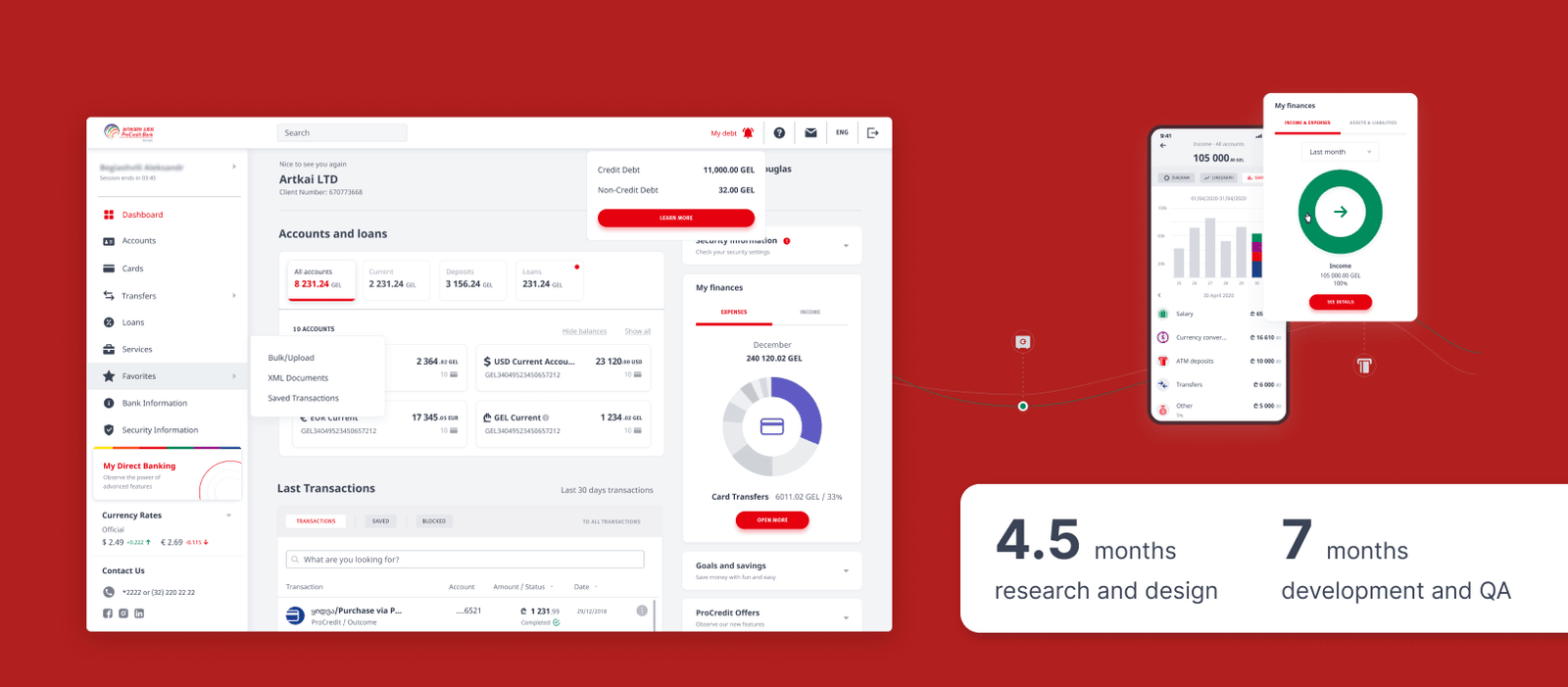
Our work had a striking impact:
- 99 percent of banking services became available online.
- Time to make a transfer through the web Internet and mobile banking app reduced by 1.5 times.
- The speed of blocking a card via mobile banking app increased by 60 percent.
- The mobile app gets two times faster to log than the previous version.
Building a Web-based P2P Lending Platform and Marketing Website
The first marketplace-based crypto-to-fiat lending platform, Coinloan, aimed to create a web-based P2P lending platform with a modern crypto-related design that would attract financial specialists and enthusiasts. The platform should have a simple, open, transparent, and safe user interface. Additionally, the client wanted to advertise the platform by developing an appealing and user-friendly marketing website.
An Artkai team of 2 UI/UX designers, 2 Front-end engineers, a QA engineer, a Project manager, and a Business analyst worked two months on research and design and four months on development and QA. After the research and discovery stage, we conducted the design and development phases simultaneously.
We identified stakeholders' expectations, needs, business goals, and KPIs during the research phase. Our team increased the platform's simplicity and usability by designing platform features around the insights learned throughout the research phase. Artkai developed a customer journey map with the omnichannel experience in mind, covering mobile, web, physical branches, and marketing interactions.
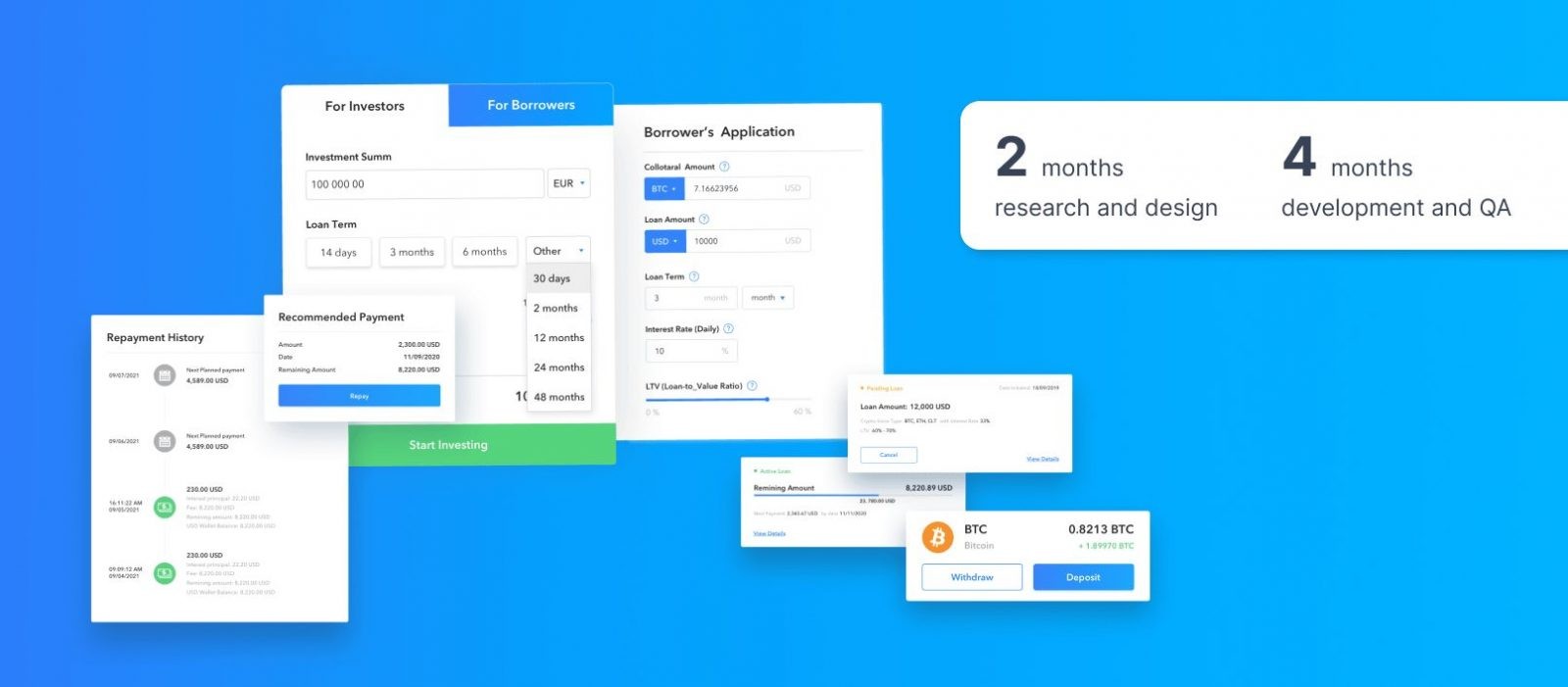
As the outcomes of Artkai’s teamwork, the client received:
- An appealing, informative, and helpful website
- Easy-to-use, comprehensive, and secure platform
- an easy and worthwhile experience
- Smooth and valuable experience
- More than 100,000 active users on the platform
SaaS Platform for the HR and Recruitment Teams in SME
Cruitment is a SaaS that assists in managing career sites and the candidate pipelines for each position. One of our most important responsibilities was to develop and install a new technological foundation to create a long-lasting system that people could use and enjoy. It included creating a new brand identity and building a SaaS with two distinct user flows for job seekers and recruiters.
Artkai team — an art director, a UI/UX designer, two front-end Engineers, two back-end engineers, a solutions architect, a DevOps, a QA engineer, a project manager, and a business analyst — spent two months on research and design, and four months on development and quality assurance. After the research and discovery phase, we did design and development in parallel.
Our team created the entire app structure based on user needs and pain points. We worked closely with stakeholders to provide practical solutions and user flow. We built the functionality with recruiters' requirements in mind. We made the recruiter’s flow simple to customize and the candidate’s functionality more straightforward.
To give the platform and brand a visual foundation, we also built a new Brand Identity. Because the recruiters will use the solution for hours daily, we decided to employ a simple graphic design without distractions and with helpful color coding. Finally, we built a marketing website with various marketing materials and illustrations.
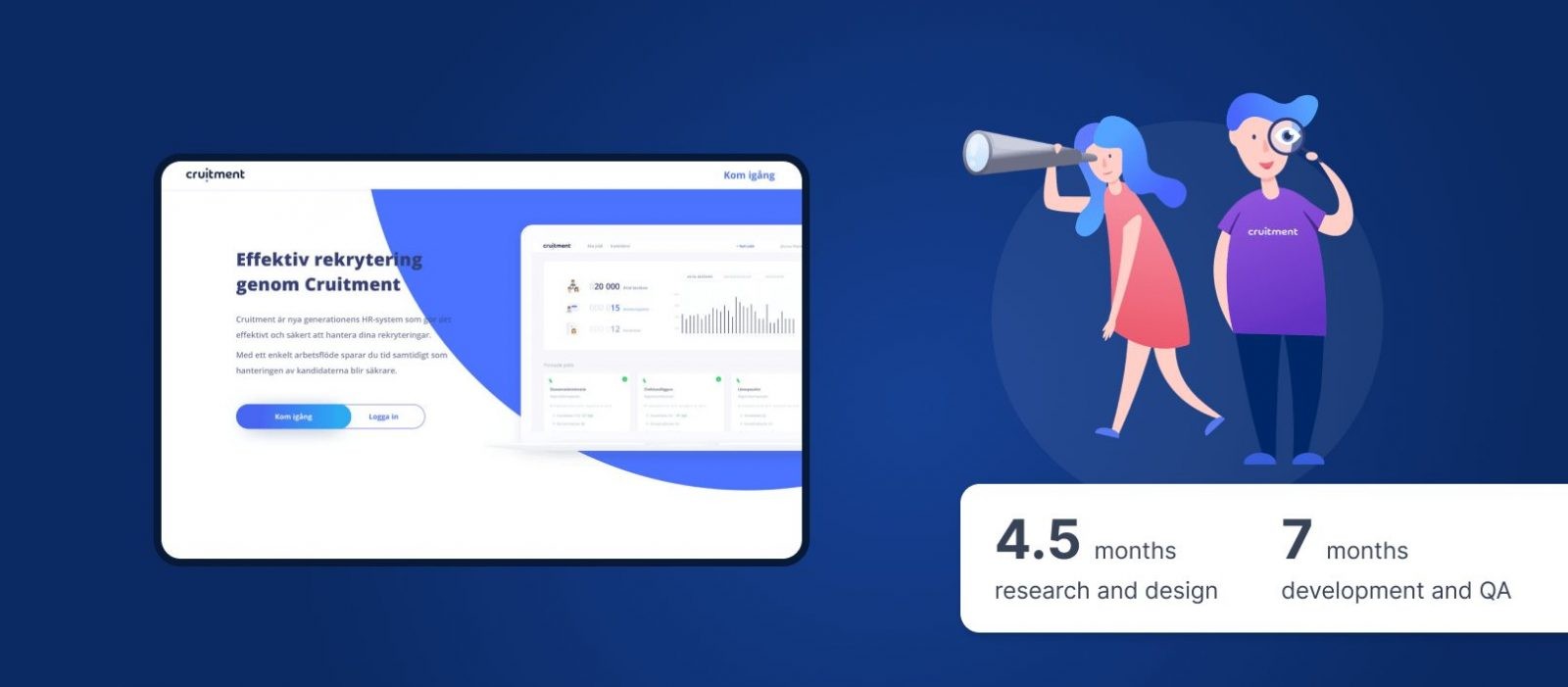
The outcomes of the new recruitment platform and brand identity development were as follows:
- The pool of candidates increased by three times.
- The number of accepted offers has doubled.
- Cost per application decreased by 1.5 times on average.
Huobi Mobile Trading Platform
Huobi Group, the world’s top blockchain company, aimed to research the European market and identify the consumer’s pain points and specific UX patterns. The project's tasks were to develop a customer-centric design, modify the mobile app for a new European market, and build a marketing website for the European market.
Artkai’s team comprised two UI/UX designers, a project manager, and a business analyst. We conducted face-to-face interviews with traders to get information on the decision-making process of the European audiences. Our team analyzed the data and created a list of insights for the platform.
Our design team developed a design system to satisfy the requirements of the target audience's various age groups. We enhanced the platform by adding such features as an intuitive interface, user control, quick access, and secure storage.
Artkai’s team developed a marketing website for the European market and a mobile version of the platform that enabled users to manage business operations from any location and at any time. We kept the interface design simple and organized. Using customer-centric UX design helped our client enter the European market.

After completing the project, our client achieved the following outcomes:
- $1,2 trillion of accumulative turnover.
- 50 percent of the global share digital assets.
- Millions of users in 130 countries.
Blockchain Prediction Market Protocol
Nezha, a liquidity engine allowing market participants to only risk loss of profit without risking the principal investment, aimed to build a web-based blockchain prediction market protocol for investors, innovators, and gamblers. The goal was to create a comprehensive solution that attracts investments, is fun and transparent, engages new users, and maintains retention.
Artkai’s team (two UI/UX designers, two front-end engineers, two back-end engineers, two blockchain engineers, a solutions architect, a DevOps, a QA engineer, a project manager, and a business analyst) conducted the research and design phase for three months. They allocated seven months for development and quality assurance. We completed the design and development steps in parallel after the research and discovery phase.
In the research and product discovery phase, we identified customers’ needs. To increase the product's simplicity and usability, we designed its features and functionality around the ideas gathered during the research phase.
Our designers managed to gamify the platform without being too attached to the image of classic gambling. We found a balance between the manufacturability of the fintech market and the gaming industry. We used vivid neon highlights to create an instantly recognizable visual identity.
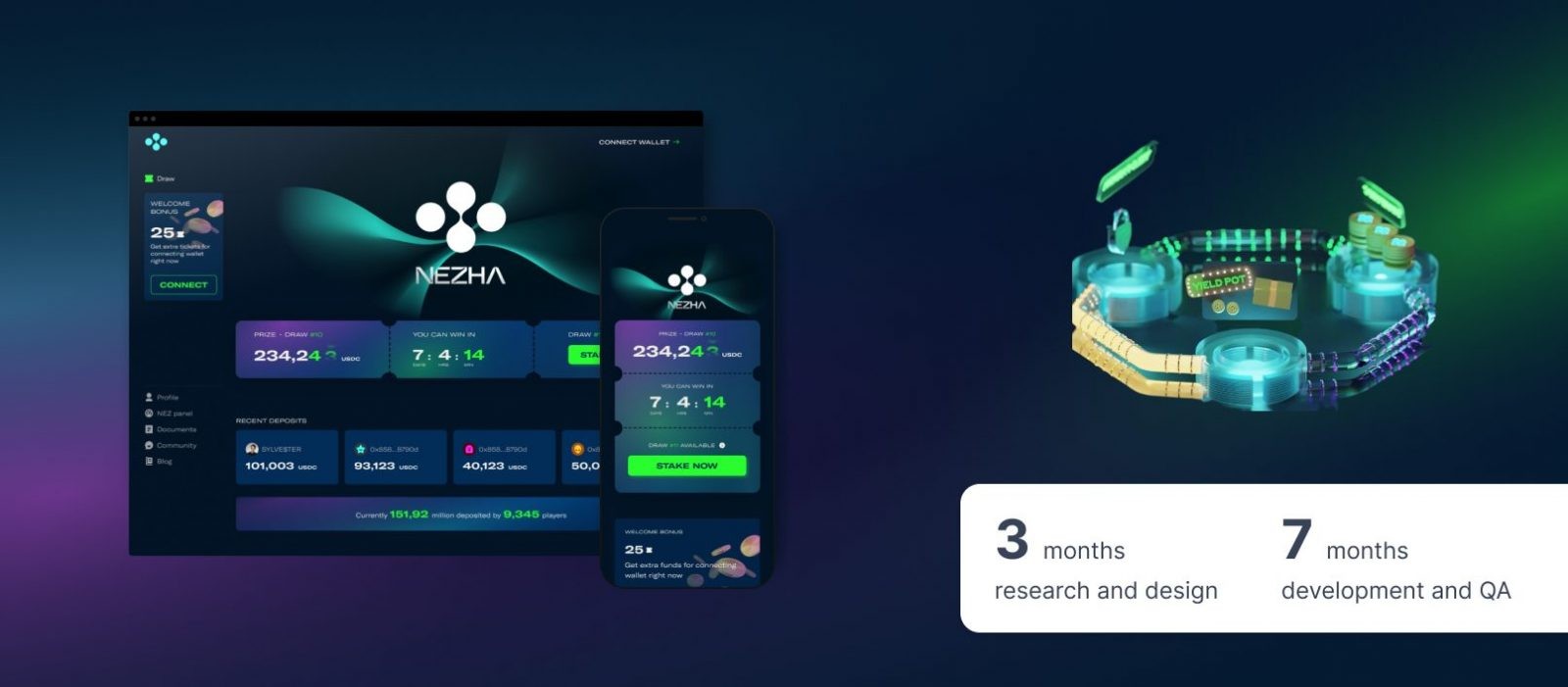
These results have led to remarkable outcomes:
- Product Discovery helped to outline the project stakeholders' vision and streamline the company procedure to retain clients by improving services.
- The end product is a complex solution with user-friendly navigation that boosts conversions and platform usage.
Digital Transformation for Energy Sector Enterprise
DTEK, a Ukrainian powergrid operator, aimed to simplify the methods for managing and paying electric bills. Artkai assisted DTEK in implementing an agile, digitally aware, and design-focused solution. Now that clients have better access to specific information, DTEK also assists them in taking charge of their energy usage to cut expenditures.
Artkai Team of two UI/UX designers, three front-end engineers, 3 back-end engineers, a SAP web services engineer, a solutions architect, a DevOps, two QA engineers, a project manager, and a business analyst spent four months on research and design followed by 12 months of development and QA.
We have created a solution architecture based on the specifications provided by the client. To comprehend their clients' business goals, we conducted interviews with various members of the target audience and an on-site workshop with the DTEK team. We compiled the findings as specifications for further platform development.
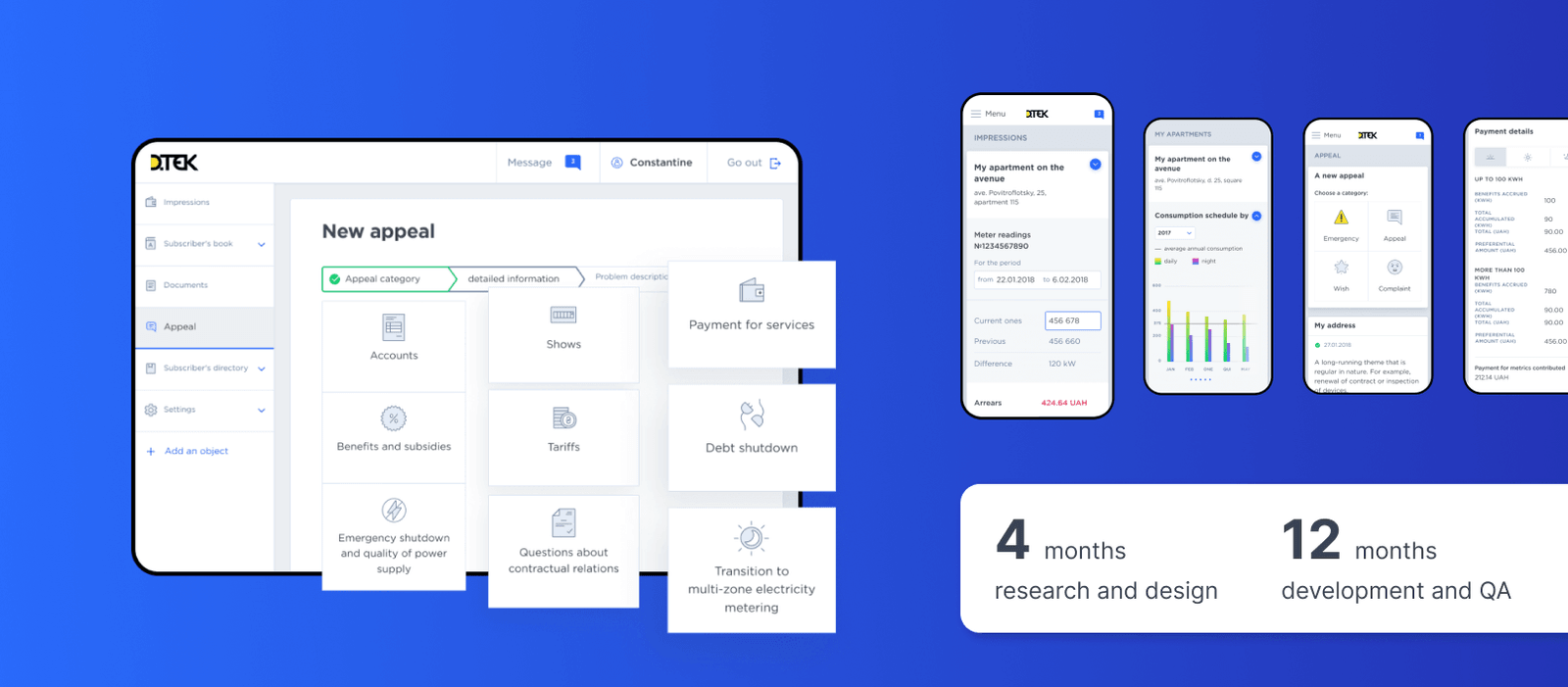
As a result, DTEK received the following outcomes:
- An increased number of electricity consumption contracts signed.
- Three times fewer inquiries were made to the customer support center.
- Customer satisfaction score increased by 1,5 times.
The 6 Phases Of The Software Product Development Life Сycle
The specific number of phases depends on the objectives of the business and its product. Most companies describe the software product development life cycle as having five to seven stages on average. Having researched the best practices, we will stick to the most common separation of the six product life cycle software development phases.
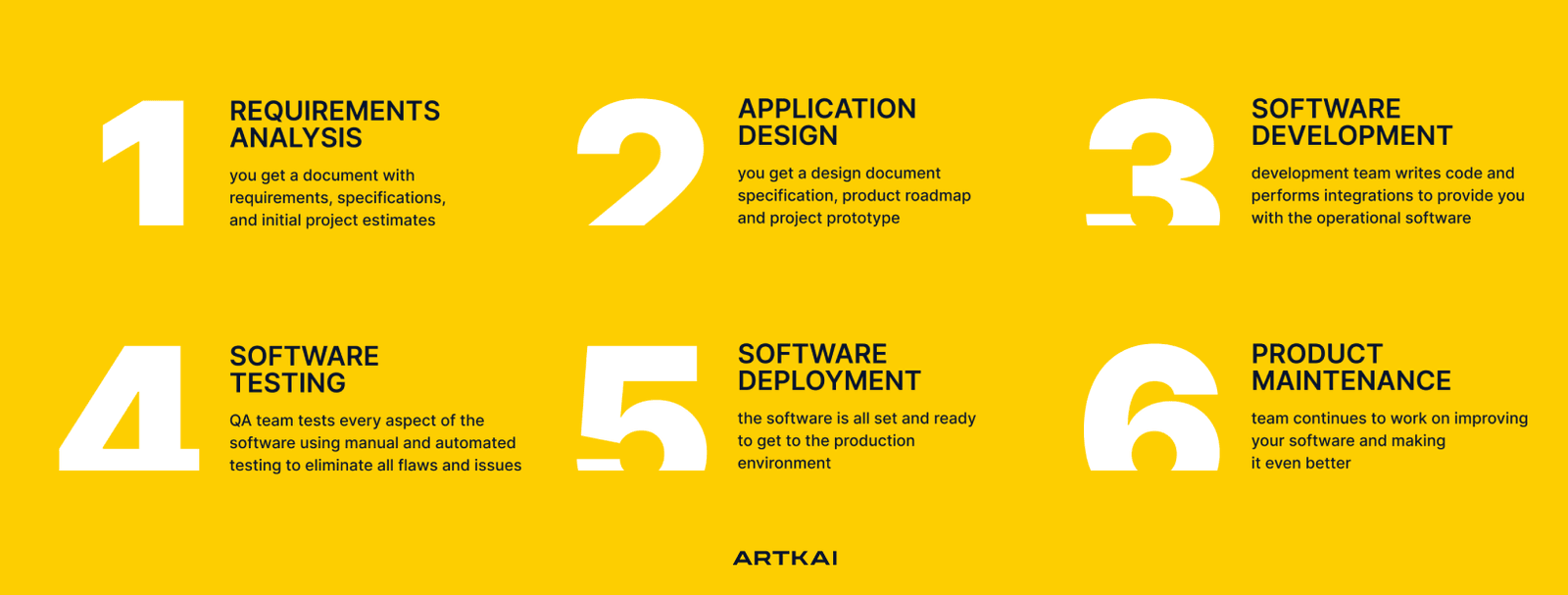
Phase 1: Requirements Analysis
The first phase aims to gather the requirements from the stakeholders and analyze how feasible they are. During this stage, factors like the product's viability, income potential, production costs, and user needs are examined. It involves researching user personas and deciding on the goal of the project. The team also analyzes the project's potential benefits and drawbacks.
At this stage, the team creates a Software Requirements Specification (SRS) document using all the information obtained during the requirement analysis phase. The SRS file contains the planned product's software, hardware, security, and network specifications. The document
outlines the project's objectives and parameters and includes product specifications and initial project estimates (budget, resources, deadlines, etc.).
Phase 2: Application Design
Once the team has decided on a broad set of requirements, the next phase is to develop an application design plan. The application design plan contains all key features of the new product, including the architecture, list of features, infrastructure requirements, security measures, and UX/UI design.
During this phase, the team establishes the proposed priority order for work and creates a product roadmap. The team compiles this data into the Design Document Specification (DDS) that needs to be examined and approved by stakeholders. It gives the team an insight into how they should build the final product.
Phase 3: Software Development
The development team starts working on the code after being comfortable with the Design Document Specification. During this phase, the engineers turn the high-level overview presented in the roadmap into a tactical collection of tasks, due dates, and daily work plans. They need to run the product through complex testing, such as static code analysis and code reviews.
Software that is operational and satisfies all of the SRS and DDS requirements is the result of this phase. Since this stage takes the longest, we advise employing agile approaches to expedite coding. Based on our expertise, design and development steps can be done in parallel after the research and discovery phase.
Phase 4: Software Testing
Once the engineering team has finished the development process, the software is available to a testing environment. The QA team and the developers will test every aspect of the program here to find any flaws, bugs, or other issues. Companies use many testing techniques to assess the new product, including manual and automated tests.
If the team finds a defect, the code is moved backward in the life cycle, and new, error-free software is developed. The testing step is complete when the product is stable, bug-free, and up to the quality criteria outlined in the earlier stages.
Phase 5: Software Deployment
At this stage, the team is sure that it has corrected all flaws and that the software was created in accordance with the goals and requirements outlined in advance. The software must now be made available to the production environment. It indicates that buyers can utilize and purchase the goods on a widespread basis. The team must produce instructional videos or user manuals on some projects before making the product available to end users.
During this phase, the deployment should ideally occur automatically, typically as part of CI/CD. Some businesses in highly regulated industries would need manual authorization to proceed with deployment. This phase is complete when a fully functional and tested product is available to customers.
Phase 6: Product Maintenance
Every software product that has been released needs to undergo systematic reviews and enhancements depending on customer feedback. Requests for improvements, problem repairs, and new features will need to be addressed. The product management team will choose which of these initiatives make it onto the product roadmap for developers to work on.
The product goes back through its software product development life cycle as many times as necessary whenever a user reports a bug or the team finds a new flaw. While most issues send the program back to the development stage, some severe defects need adjustments in the design stage.
Elevate Your Product Development with Artkai
Software product development life cycle is an approach to the development process that helps to deliver high-quality software as fast, safely, and cost-effectively as possible. Following the six software product development life cycle stages outlined in our guide, you will optimize your product development, avoiding overbudgeting, delays, costly failures, and other possible pitfalls of rushing into unplanned software development.
Artkai is an award-winning full-cycle product development company with proven expertise in software product development life cycle implementation. Our remote team uses time-tested approaches to help you shape, build and enhance your entire digital product. We create customer-centric digital innovations that make sense.
Contact us to consult deeper on the topic of product development.
Clients and Results
Schedule your free consultation
Don't miss this opportunity to explore the best path for your product. We are ready to delve into the specifics of your project, providing you with expert insights and optimal solutions.
Book your free sessionRead More
Explore articles from Artkai - we have lots of stories to tell
Join us to do the best work of your life
Together we advance the human experience through design.